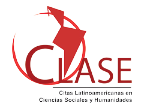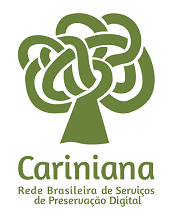Representation structures for data reuse in the context of research ecology: institutional CRIS
DOI:
https://doi.org/10.5433/1981-8920.2020v25n3p1Keywords:
Representation of Information, Data Reuse, CRIS, Ontology, FAIR PrinciplesAbstract
Introduction: The Current Research Information System (CRIS), emerges as a response to the need for optimization in the management process of the large volume of data and information that permeate the life cycle of research. Such information is dispersed in multiple informational environments, of complementary characteristics, today isolated that can be integrated, and provide a broader panorama of research.Objective: In this context, the present study discusses the possibilities of data integration of different systems that store data related to research ecology, using representation structures and semantic infrastructure to compose a research ecology, constituted as an institutional CRIS.
Methodology: As a methodological procedure, it uses the bibliographic review for the theoretical-conceptual basis of the study, aiming at contextualizing the research ecology infrastructure, especially the structures of representation, ontologies and FAIR principles.
Results: The results are presented as a conceptual model of data integration of a research ecology, capable of supporting the composition of an institutional CRIS.
Conclusions: The compatibility of representation structures available in multiple information systems and the use of existing technologies aiming to constitute an institutional CRIS, requires that the performance of the information professional is based on knowledge of information architecture, metadata, communication standards and protocols, interoperability and semantic web technologies, according to the model proposed in this study.
Downloads
References
AUSTRALIAN NATIONAL DATA SERVICE. FAIR data training. Disponível em: https://www.ands.org.au/working-with-data/fairdata/training. Acesso em: 09 jul. 2020.
BERNERS-LEE, T.; HENDLER, J.; LASSILA, O. The semantic web. Scientific American, v. 284, n. 5, p. 28-37, 2001.
BRANDT, M. B. Modelagem da informação legislativa: arquitetura da informação para o processo legislativo brasileiro. 2020. Tese. (Doutorado em Ciência da Informação) – Universidade Estadual Paulista, Marília, 2020. Disponível em: http://hdl.handle.net/11449/191740. Acesso em: 09 jul. 2020.
BRYANT, R.; CLEMENTS, A.; FELTES, C.; GROENEWEGEN, D.; HUGGARD, S.; MERCER, H.; MISSINGHAM, R.; OXNAM, M.; RAUH, A.; WRIGHT, J. Research Information Management: defining RIM and the library’s role. Dublin: OCLC Research, 2017. Disponível em: https://doi.org/10.25333/C3NK88. Acesso em 07 jul. 2020.
CAMARGO, L. S. A.; VIDOTTI, S. A. B. G. Arquitetura da informação: uma abordagem prática para o tratamento de conteúdo e interface em ambientes informacionais digitais. Rio de Janeiro: LTC, 2011.
CAMPOS, L. M.; CAMPOS, M. L. A. Aplicação de dados interligados abertos apoiada por ontologia. In: ENCONTRO NACIONAL DE PESQUISA EM CIÊNCIA DA INFORMAÇÃO, 15., 2014, Belo Horizonte. Anais [...] Belo Horizonte: ANCIB, 2014. Disponível em: http://enancib2014.eci.ufmg.br/documentos/anais/anais-gt8. Acesso em: 2 fev. 2016.
CATARINO, M. E.; SOUZA, T. B. A representação descritiva no contexto da web semântica. Transinformação, Campinas, v. 24, n. 2, p. 77-90, 2012. Disponível em: https://www.scielo.br/scielo.php?pid=S0103-37862012000200001&script=sci_abstract&tlng=pt. Acesso em: 17 jul. 2020
DAVENPORT, T. H. Ecologia da informação: por que só a tecnologia não basta para o sucesso na era da informação. São Paulo: Futura, 1998.
euroCRIS. CERIF in brief. Disponível em: https://www.eurocris.org/eurocris_archive/cerifsupport.org/cerif-in-brief/index.html. Acesso em: 04 jul. 2020.
euroCRIS. CERIF refactoring project: an introduction. Disponível em: https://eurocris.org/cerif-refactoring-project-introduction. Acesso em: 04 jul. 2020.
euroCRIS. CERIF support blog. Disponível em: https://www.eurocris.org/eurocris_archive/cerifsupport.org/. Acesso em: 04 jul. 2020.
euroCRIS. The Common European Research Information Format Ontology: CERIF Ontology 0.2. 2013. Disponível em: https://www.eurocris.org/ontologies/cerif/1.3/index.html. Acesso em: 12 jul. 2020.
euroCRIS. Services. Disponível em: https://eurocris.org/services. Acesso em: 04 jul. 2020.
FAIRDataTeam. FAIRDataPoint-Spec. Disponível em: https://github.com/FAIRDataTeam/FAIRDataPoint-Spec. Acesso em: 12 jul. 2020.
FORCE21. Guiding principles for findable, accessible, interoperable and re-usable data publishing version b1.0. Disponível em: https://www.force11.org/fairprinciples#Annex1-1. Acesso em: 07 jul. 2020.
GOFAIR. FAIR principles. Disponível em: https://www.go-fair.org/fair-principles/. Acesso em: 07 jul. 2020.
JEFFERY, K. G.; ASSERSON, A. CERIF-CRIS for the european einfrastructure. Data Science Journal, v. 9, 2010. Disponível em: https://datascience.codata.org/articles/abstract/10.2481/dsj.CRIS3/. Acesso em: 04 jul. 2017.
JOINT, N. Current research information systems, open access repositories and libraries: ANTAEUS. Library Review, v. 57, n. 8, p. 570-575, 2008. Disponível em: https://doi.org/10.1108/00242530810899559. Acesso em: 19 set. 2017.
LYRASIS. VIVO-ISF Ontology. 2016. Disponível em: https://wiki.lyrasis.org/display/VTDA/VIVO-ISF+Ontology. Acesso em: 17 jul. 2020.
LOPATENKO, A. S. Information retrieval in Current Research Information Systems. 2001. Disponível em: https://arxiv.org/abs/cs/0110026. Acesso em: 22 jun. 2017.
MORVILLE, P.; ROSENFELD, L.. Information architecture for the world wide web. Sebastopol, CA: O'Reilly, 2006.
OLIVEIRA, H. P. C. Arquitetura da informação pervasiva: contribuições conceituais. 2014.Tese (Doutorado em Ciência da Informação) - Universidade Estadual Paulista, Marília. Disponível em: http://hdl.handle.net/11449/110387. Acesso em: 01 set. 2017.
SALES, L. F.; SAYÃO, L. F. Ciberinfraestrutura de informação para a pesquisa: uma proposta de arquitetura para a integração de repositórios e sistemas CRIS. Informação & Sociedade: Estudos, João Pessoa, v. 25, n. 3, p. 163-184, set./dez. 2015. Disponível em: http://www.ies.ufpb.br/ojs/index.php/ies/article/view/23998/14535. Acesso em 11 ago. 2017.
SANTAREM SEGUNDO, J. E. Representação iterativa: um modelo para Repositórios Digitais. 2010. Tese (Doutorado em Ciência da Informação) – Universidade Estadual Paulista, Marília, 2010. Disponível em: https://orcid.org/0000-0002-4216-0374. Acesso em: 17 jul. 2020.
SANTAREM SEGUNDO, J. E.; CONEGLIAN, C. S. Tecnologias da web semântica aplicadas a organização do conhecimento: padrão SKOS para construção e uso de vocabulários controlados descentralizados. In: GUIMARÃES, J. A. C.; DODEBEI, V. Organização do conhecimento e diversidade cultural. Marília: Fundepe, 2015. p. 224-233.
SAYÃO, L. F.; SALES, L. F. Algumas considerações sobre os repositórios digitais de dados de pesquisa. Informação & Informação, Londrina, v. 21, n. 2, p. 90-115, maio/ago., 2016. Disponível em: http://www.uel.br/revistas/uel/index.php/informacao/article/view/27939/20122. Acesso em: 10 set. 2017.
SHEPPARD, N. Learning how to play nicely: repositories and CRIS. Ariadne, n. 64, jul. 2010. Disponível em: http://www.ariadne.ac.uk/issue64/wrn-repos-2010-05-rpt. Acesso em: 01 ago. 2017.
TRIGGS, G. VIVO-ISF Academic Module. 2016. Disponível em: https://wiki.lyrasis.org/display/VTDA/VIVO-ISF+Academic+Module. Acesso em: 17 jul. 2020.
VECHIATO, L. F.; OLIVEIRA, H. P. C.; VIDOTTI, S. A. B. G. Arquitetura da informação pervasiva e encontrabilidade da informação: instrumento para a avaliação de ambientes informacionais híbridos. Informação & Tecnologia, v. 3, n. 1, p. 47-65. 2016. Disponível em: https://periodicos.ufpb.br/index.php/itec/article/view/38365. Acesso em: 29 jun. 2020.
Downloads
Published
How to Cite
Issue
Section
License
Copyright (c) 2020 Informação & Informação

This work is licensed under a Creative Commons Attribution 4.0 International License.
A revista se reserva o direito de efetuar, nos originais, alterações de ordem normativa, ortográfica e gramatical, com vistas a manter o padrão culto da língua e a credibilidade do veículo. Respeitará, no entanto, o estilo de escrever dos autores. Alterações, correções ou sugestões de ordem conceitual serão encaminhadas aos autores, quando necessário.
O conteúdo dos textos e a citação e uso de imagens submetidas são de inteira responsabilidade dos autores.
Em todas as citações posteriores, deverá ser consignada a fonte original de publicação, no caso a Informação & Informação.











